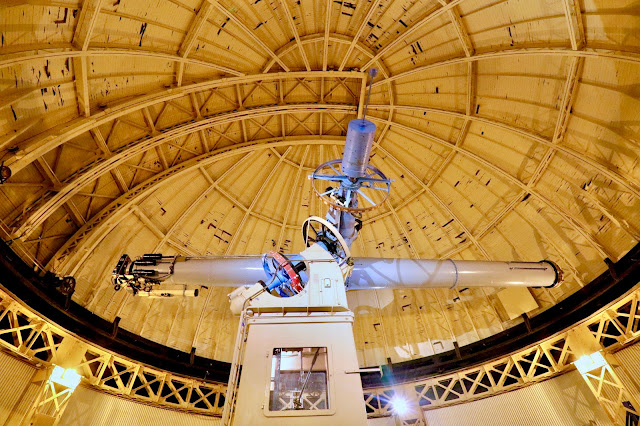The
Allegheny Observatory is a grand old Pittsburgh institution, and a wonderful hidden gem. The observatory offers free tours, with reservations. Even better are the free
monthly lectures. Their lecture hall is pretty small, and the quality of the lectures is pretty terrific, so seats are very much in demand and reservations are required.
We've been able to snag seats for two talks. One talk was given by a professor who has been studying the atmosphere of the moon. I remembered the old joke, "Did you hear about the restaurant on the moon? The food is good, but it's got no atmosphere!". So I was surprised to learn that the moon does indeed have a (weak) atmosphere, and to learn the clever ways it's been detected and measured. Another talk was given by a group of Pitt students and their professors, on their
NASA funded project to study a unique aspect of the total solar eclipse with high atmosphere balloons. They were testing the hypothesis that "shadow bands" which form like shadowy ripples across the ground during a total eclipse are caused by atmospheric turbulence. They had to figure out every aspect of how to test this hypothesis and how to build reliable equipment to do so. Not surprisingly, since astronomers study the distant cosmos, the field seems to attract people who are clever problem solvers.
After the lectures, they offer tours of the building. Two of the three observatory domes are included in the tour. On a cloudy night, we were given a deluxe building tour that included the crypt beneath the observatory that houses the ashes of two former observatory directors, James Keeler and John Brashear, as well as each of their wives, and Keeler's son. The next time we came, we stuck around for the tour again and were rewarded with a look through one of the telescopes. They had it pointed at Castor. Castor looks like one very bright star to the naked eye. Through the telescope it looked like two stars. In reality, it's actually
six stars in a multiple star system!
 |
A statue of John Brashear, the observatory director who laid the groundwork for the
construction of the current building. |
 |
| The library. |
 |
| Urania, Greek Muse of Astronomy. |
 |
| The view under the floor of the main observatory dome. The floor is not attached to the walls, and can be raised or lowered to make it easy to look through the big telescope no matter what angle it's pointed at. |
 |
| One of the two smaller telescopes, pointed at Castor. |
 |
| Jasper was allowed to manipulate the controls of the dome. |








Comments
Post a Comment
Hello! I love to read your comments, but please be aware that they are moderated. This will result in a delay before they are posted. Thank you for your patience.